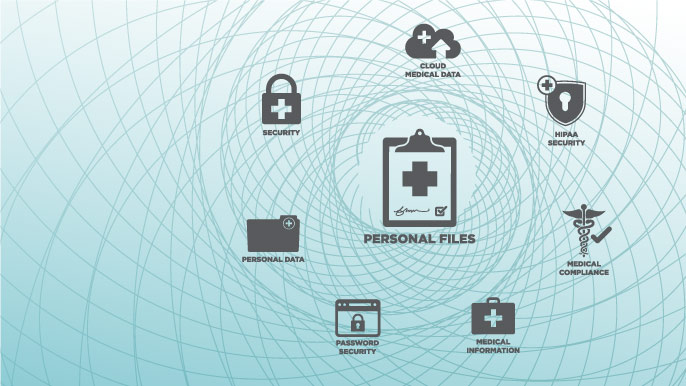Navigating PFAS Litigation
What Legal Professionals Need to Know
February 5, 2025
Record Retrieval
Navigating the Complex Landscape of PFAS Litigation
What Are PFAS?
Per- and polyfluoroalkyl substances are man-made chemicals. They’ve existed since the 1940s, and were originally used to make tanks water resistant during World War II. These highly stable chemicals are resistant to degradation, making them useful in a wide range of applications, including non-stick cookware, water-repellent clothing, stain-resistant fabrics, and firefighting foams.However, while PFAS are useful in various products and everyday uses—such as cooking scrambled eggs for breakfast in a non-stick pan—they are also highly persistent in the environment and the human body. That’s why they’ve been dubbed "forever chemicals." PFAS can accumulate in the body and in soil and water over time, leading to potential health problems, not to mention environmental concerns. Studies have linked PFAS exposure to certain types of cancer, thyroid disease, immune system dysfunction, and developmental issues in children.
Key Takeaways:
- PFAS, or polyfluoroalkyl substances, are synthetic chemicals used in consumer and industrial products since the 1940s.
- Known as "forever chemicals," PFAS persist in the environment and human body.
- Studies have linked PFAS exposure to cancer, thyroid disease, and immune system effects.
The Emergence of PFAS Litigation
PFAS litigation began in the early 2000s. An early case targeted DuPont, which was filed on behalf of residents living near the company’s Washington Works plant in West Virginia. The lawsuit alleged that the company contaminated local drinking water with PFOA (perfluorooctanoic acid), which is a type of PFAS. The case settled, and as part of the settlement agreement DuPont agreed to fund an independent scientific study conducted by the C8 Science Panel to investigate the health effects of PFOA exposure. The panel’s findings linked PFOA exposure to a number of health conditions, leading to additional legal action against DuPont, and broader interest in the potential health risks of PFAS.Extensive media coverage, including the 2019 film "Dark Waters," which is currently streaming on Netflix, has led to greater public awareness. And regulatory agencies have begun to take action, with several states and the U.S. Environmental Protection Agency advancing the regulation of PFAS through standards and guidelines for PFAS in drinking water and the environment. Congress is also getting involved. On April 18, 2024, legislators introduced the federal Forever Chemical Regulation and Accountability Act (FCRAA). The FCRAA, if enacted, would eliminate all “non-essential” uses of PFAS within a ten-year period. The increased scrutiny of PFAS has also led to a surge in PFAS-related lawsuits, as individuals, communities, and governments seek to hold companies accountable for the alleged harm caused by these chemicals.
Key Takeaways:
- PFAS litigation began in the early 2000s with a landmark case against DuPont involving drinking water contamination.
- Regulatory bodies and Congress are actively working toward stronger PFAS oversight and potential restrictions.
- Lawsuits are increasing as plaintiffs allege widespread harm from PFAS exposure.
Common Claims and Entities in PFAS Litigation
PFAS litigation takes several different forms, and individual claims are often consolidated as class action suits. Environmental claims can arise due to the presence of PFAS in the environment, particularly in sources of drinking water. Plaintiffs in these cases seek to hold companies responsible for the costs of cleaning up contaminated sites and ensuring access to safe drinking water.When individuals are exposed to PFAS and suffer injuries, they may seek compensation via personal injury claims, based on allegations that companies knew or should have known about the potential health risks associated with PFAS but failed to warn consumers or take appropriate action to address those risks.
In addition to private plaintiffs, state and local governments have also pursued claims against companies involved in the production and use of PFAS. For instance, in 2023, the State of Michigan filed a lawsuit against a paper manufacturer, alleging that its manufacturing process produced sludge that purportedly contained high levels of PFAS detected in groundwater and surface water. These lawsuits often seek to recover costs associated with cleaning up contaminated sites, treating affected residents, and addressing other public health concerns.
The types of entities that are commonly named as defendants in PFAS litigation include chemical manufacturers (such as 3M and DuPont), as well as companies that have used PFAS in their manufacturing processes or products, such as paper mills, textile manufacturers, and producers of non-stick cookware. Firefighting foam manufacturers have also been targeted. As PFAS litigation continues to evolve, new types of claims, legal strategies, and defendants may emerge. It’s therefore important for legal professionals to stay abreast of new developments that may impact current and future litigation.
Key Takeaways:
- PFAS litigation includes both environmental lawsuits and personal injury claims.
- Governments and individuals are seeking accountability for products that contain PFAS and their alleged health effects.
- Common defendants include chemical manufacturers and producers of firefighting foam.
Challenges in Proving Causation
One of the biggest challenges for plaintiffs in PFAS litigation is proving causation—establishing a clear link between exposure to PFAS and the specific health problems experienced by plaintiffs. Because many of the health conditions associated with PFAS exposure, such as cancer and thyroid disease, may not develop until years or even decades after the initial exposure, it can be difficult for plaintiffs to prove a causal link between their exposure and their health problems.Another obstacle is the fact that PFAS are used in a variety of products and applications, which means that individuals may be exposed to these chemicals through multiple sources over the course of their lives. This can complicate efforts to identify the specific source (or sources) of exposure that may have contributed to a plaintiff's health problems. There’s also a lack of definitive scientific evidence to support claims. While various studies have linked PFAS exposure to health problems, the scientific evidence is stronger for some outcomes than others. Accordingly, in many PFAS cases, plaintiffs allege that their specific health problems were caused by exposure, but still face significant challenges convincing courts of the causal link.
To address these challenges, plaintiffs in PFAS litigation often rely on expert testimony from medical and scientific professionals who can help establish the crucial link between exposure and health outcomes. Epidemiological studies, which examine patterns of disease in populations exposed to PFAS, can also provide valuable evidence to support causation. However, the complex nature of PFAS exposure and the limitations of available scientific evidence mean that proving causation will likely remain a significant hurdle in many PFAS lawsuits.
Key Takeaways:
- Proving causation in PFAS litigation is challenging due to delayed symptoms and multiple sources of exposure.
- PFAS cases often rely on expert testimony and epidemiological studies to support claims.
- Plaintiffs allege that exposure contributed to immune system issues, cancer, and other long-term health effects.
Other Common Challenges in PFAS Litigation
In addition to the challenges of proving causation, PFAS litigation presents several other obstacles that plaintiffs and their attorneys must navigate and potentially overcome.One is the statute of limitations. Each state has its own statute of limitations, and in PFAS cases, determining when the statute of limitations begins to run can be complicated due to the long latency periods associated with many PFAS-related health conditions. Plaintiffs may need to argue for an extension of the statute of limitations based on the "discovery rule," which allows the relevant time limit to begin when a plaintiff discovers or reasonably should have discovered the harm and its cause.
Another challenge arises when government entities, such as military bases or public airports, are named as defendants. These entities often attempt to dismiss the claims by asserting sovereign immunity, a legal doctrine that protects government agencies from being sued without their consent.
In addition, some companies with PFAS claims mounting against them may choose to file for bankruptcy protection, creating additional hurdles for plaintiffs seeking compensation. Bankruptcy proceedings can halt ongoing lawsuits and limit the assets available for recovery. This strategy has been employed by companies in other mass tort litigation matters, such as Purdue Pharma in the opioid litigation and Johnson and Johnson subsidiary LTL Management LLC in the talc litigation.
These legal strategies can delay or limit PFAS settlements sought by plaintiffs.
Key Takeaways:
- The statute of limitations can be complex in PFAS cases due to delayed symptom onset.
- Government defendants may assert sovereign immunity to avoid liability.
- Bankruptcy filings by corporate defendants can stall or reduce plaintiff compensation.
Medical Records Retrieval in PFAS Litigation
One of the key challenges in PFAS litigation is the timely and accurate retrieval of medical records. Given the long latency periods associated with PFAS-related health conditions and the potential for fragmented care across multiple providers, obtaining comprehensive medical histories can be a daunting task. However, the success of these cases often hinges on the ability to establish a clear link between PFAS exposure and the plaintiff's health problems, making medical records retrieval a critical component of the litigation process.As PFAS lawsuit marketing campaigns continue to generate public attention and increase case volume, law firms are under pressure to handle large-scale intake and discovery efficiently. This makes reliable document and medical records retrieval more critical than ever.
As more PFAS lawsuit signed cases accumulate, especially in high-volume jurisdictions, logistical challenges like record management, jurisdictional coordination, and settlement structuring become increasingly complex. Lexitas, a leading provider of medical record retrieval services, offers a range of solutions designed to help attorneys navigate these challenges.
For PFAS cases involving hundreds or thousands of medical records, manually reviewing documents can be inefficient, inconsistent, labor-intensive, and time-consuming. Lexitas' Record Insights™ technology offers a powerful solution to this problem. By extracting key medical information and creating user-friendly summaries, Record Insights™ condenses complete medical histories into concise, easily searchable reports.
Key Takeaways:
- Medical records are essential for proving causation in PFAS litigation.
- Long latency periods and multi-provider care complicate retrieval efforts.
- Lexitas’ Record Insights™ helps law firms streamline document review with searchable summaries.
- Efficient medical records retrieval can improve outcomes in complex PFAS lawsuits.
Summarize thousands of pages of medical records quickly and inexpensively
Partnering with experienced medical record retrieval services like Lexitas can provide attorneys with a significant advantage. By leveraging cutting-edge technology and specialized expertise, these services can help streamline the retrieval process, ensure the accuracy and completeness of medical histories, and ultimately support stronger, more compelling cases on behalf of PFAS plaintiffs.
Review of Key PFAS Cases
Several high-profile PFAS cases have helped shape the current litigation landscape and provide valuable lessons for parties and legal professionals. A few of the most notable cases include:A. DuPont and the C8 Science Panel: As previously mentioned, the class action lawsuit against DuPont and the subsequent C8 Science Panel's findings played a significant role in drawing attention to the potential health risks of PFAS. The panel's conclusions, which linked PFOA exposure to six specific health conditions, laid the groundwork for future personal injury and product liability claims against DuPont and other PFAS manufacturers.
B. Minnesota's settlement with 3M: In 2018, the state of Minnesota reached a landmark settlement with 3M, resolving a lawsuit that accused the company of contaminating groundwater with PFAS. Under the terms of the settlement, 3M agreed to pay $850 million to the state for clean-up costs and water filtration projects. This case demonstrated the potential for state governments to hold PFAS manufacturers accountable and secure significant financial recoveries.
C. Ongoing multi-district litigation (MDL) in South Carolina: In 2018, the U.S. Judicial Panel on Multidistrict Litigation consolidated dozens of PFAS lawsuits into a single MDL in the District of South Carolina. The MDL, which involves claims against several PFAS manufacturers and users, including 3M, DuPont, and Chemours, is expected to serve as a bellwether for future PFAS litigation. The outcome of the MDL could have significant implications for the liability of PFAS companies and the ability of plaintiffs to recover damages.
Conclusion
The landscape of PFAS litigation is complex and constantly evolving, presenting both challenges and opportunities for those seeking to hold manufacturers and users of these chemicals accountable. As scientific evidence of the health and environmental risks associated with PFAS continues to grow, the legal and regulatory strategies and frameworks for addressing contamination are also developing. The outcomes of key cases and regulatory actions will have significant implications for affected communities and how cases are fought and won in the future. We will continue to keep you apprised of future developments in this important area of the law, and if you need assistance with medical record retrieval for your PFAS cases, Lexitas' experts can help streamline the process and support your efforts to build strong cases on behalf of your clients.Related Resources

Case Studies
Record Retrieval
Lexitas Designs A Groundbreaking Collaborative Record Retrieval Solution For One Of The World’s Largest MDLs
In Re: Zantac (Ranitidine) Products Liability litigation consists of 156,000 plaintiffs and tens of thousands of medical records.
Read More
Articles
Record Retrieval
Camp Lejeune Case – Considerations Around Proof of Exposure and Proof of Diagnosis
In the first months since the Camp Lejeune Justice Act was enacted, the JAG Tort Claims Unit reported that over 5,000 Camp Lejeune water contamination claims had been filed so far.
Read More
Articles
Record Retrieval
HIPAA-Compliant Safeguards for Your Record Retrieval Partners
HIPAA-compliance is a complex detail that law firms cannot afford to overlook, especially when working with third parties who handle medical records.
Read More